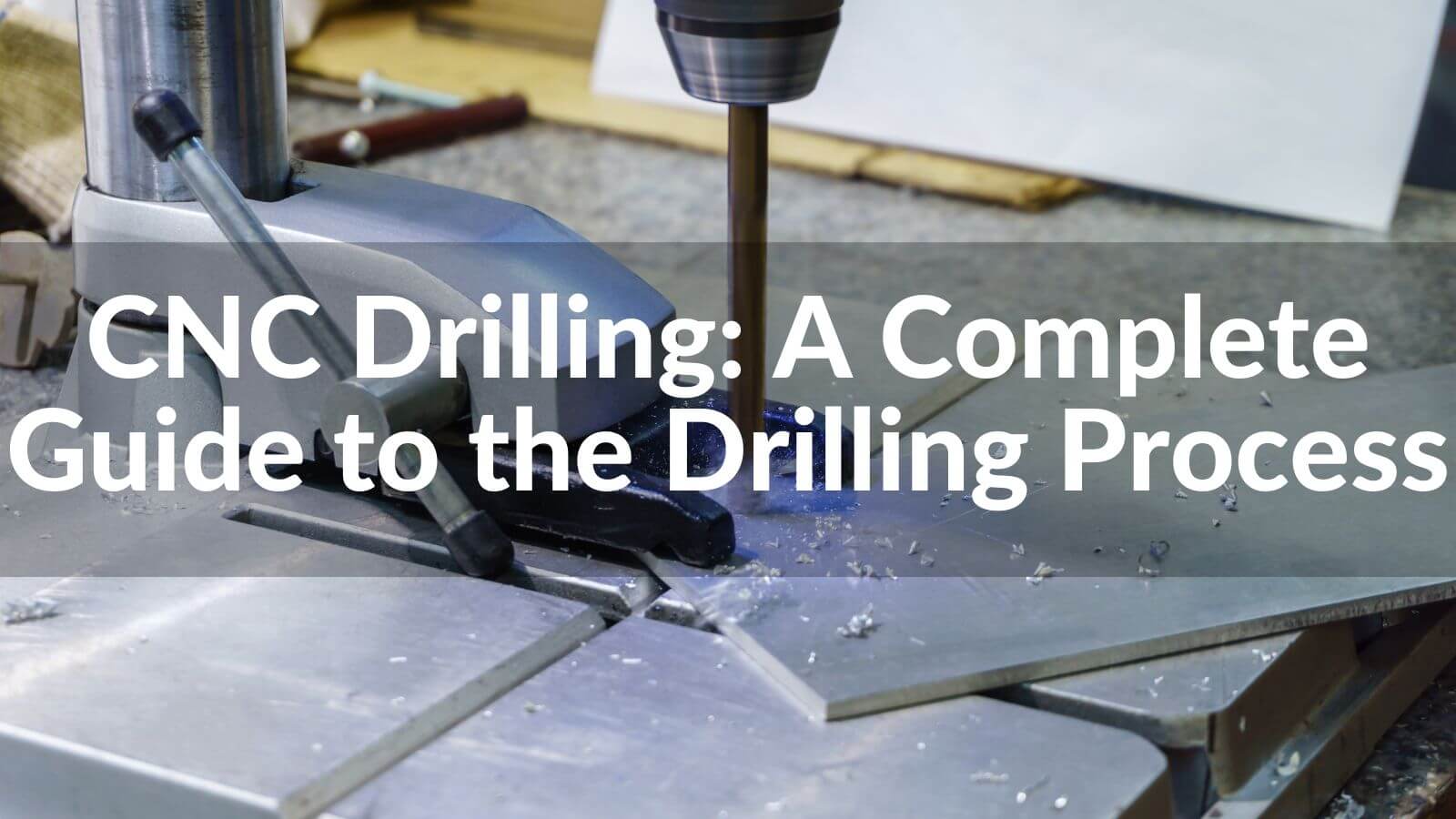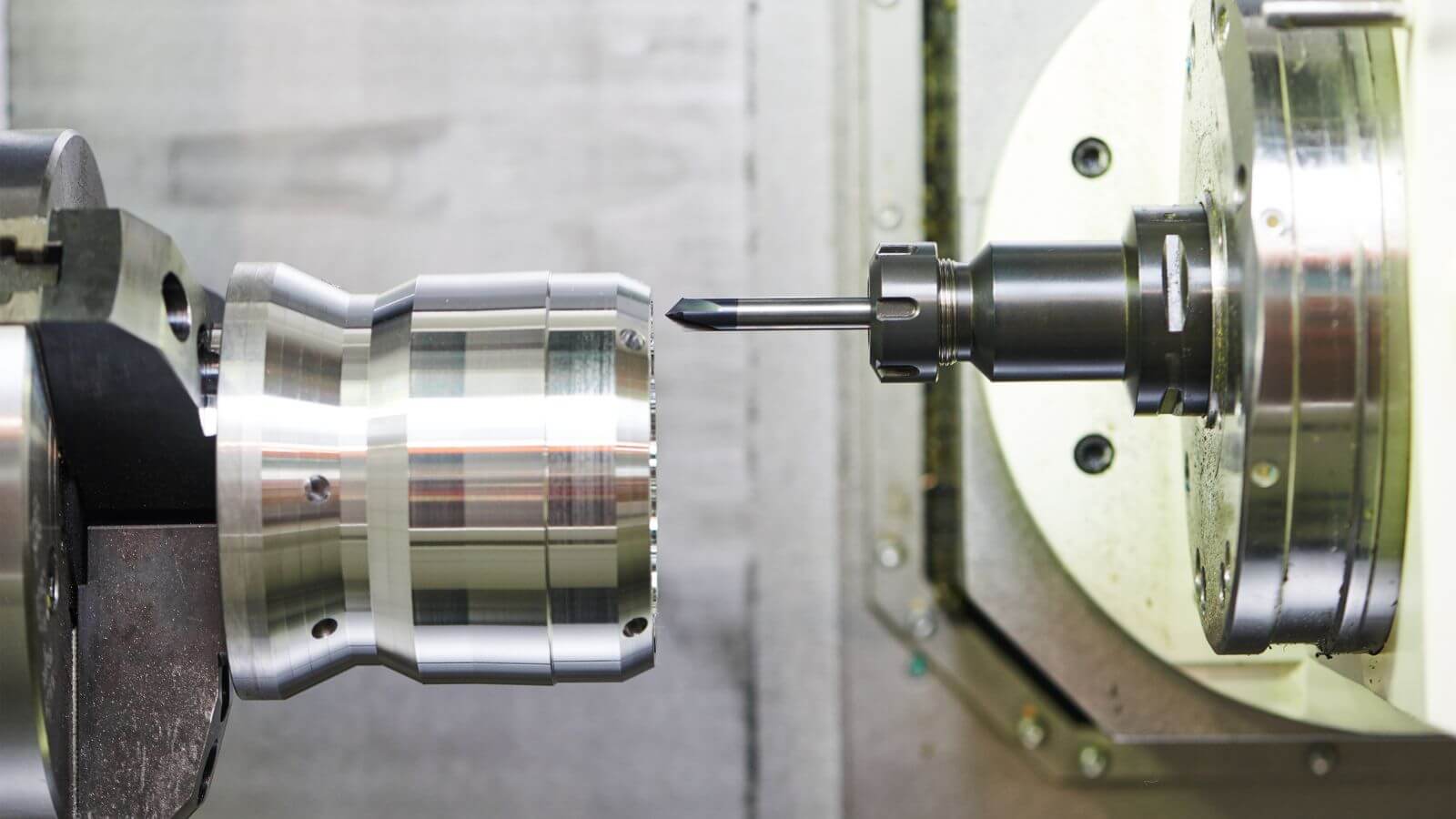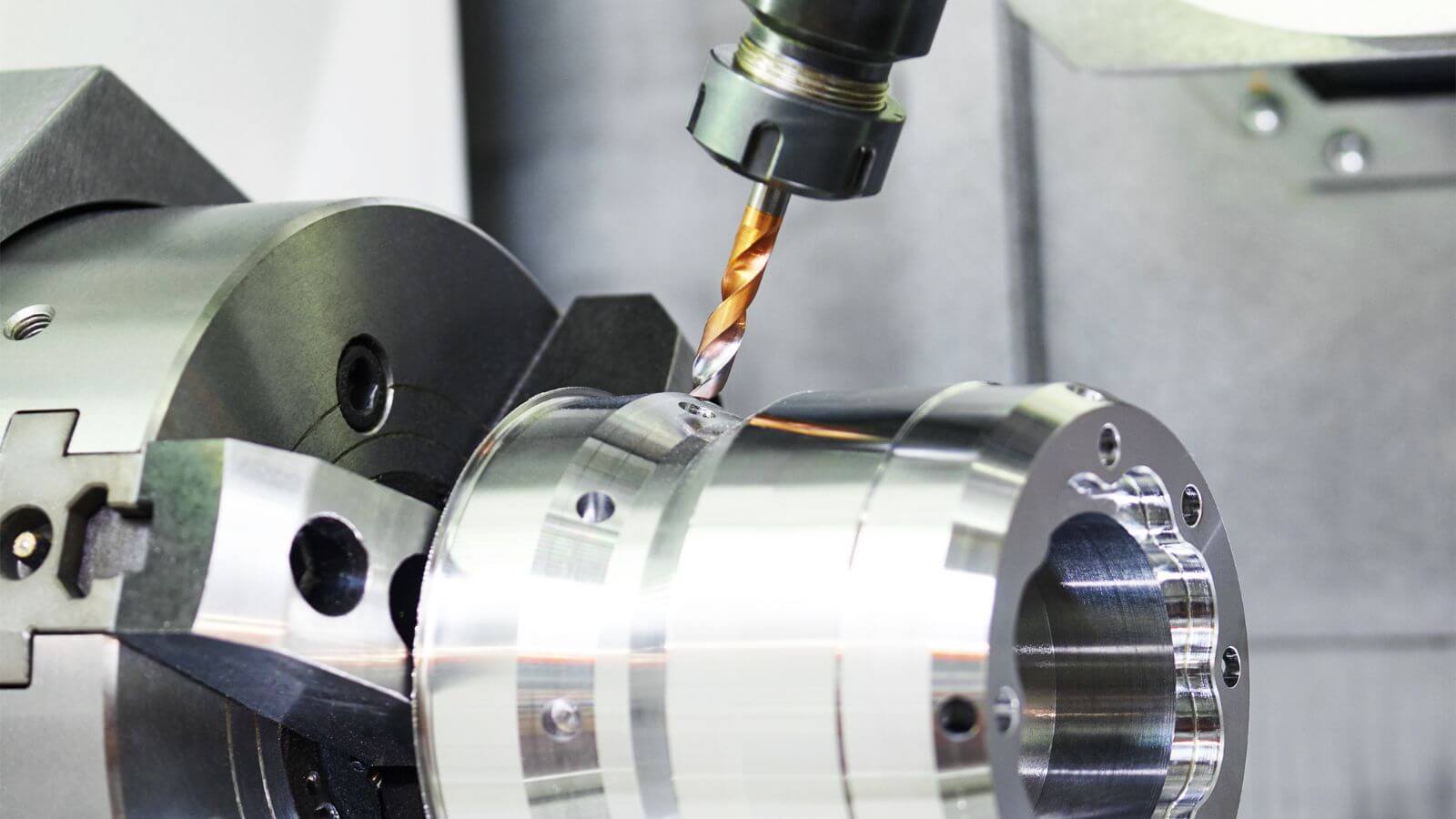CNC Machining
200 sets high precision CNC machine, covering turning, drilling, milling, broaching,grinding, wire EDM etc. all machining process.Machined prototypes and production parts in as fast as 1-3 days

In the world of manufacturing and engineering, CNC (Computer Numerical Control) drilling has revolutionized the drilling process. CNC drilling involves the use of computer-controlled machines to perform precise drilling operations. This technology has significantly enhanced drilling efficiency, accuracy, and versatility, making it an indispensable tool in various industries.
CNC drilling machines are equipped with advanced software and hardware systems that allow for precise control over the drilling process. These machines can execute complex drilling operations with high accuracy, ensuring consistent results and minimizing errors. From creating holes in metal components to drilling intricate patterns in circuit boards, CNC drilling has become an essential part of modern manufacturing and engineering processes.

CNC drilling is a type of machining that uses computer-controlled equipment to perform drilling operations precisely and correctly. Drilling methods are repeatable and mechanised thanks to the CNC drilling machine, which carries out instructions that have been input into it.
CNC drilling offers numerous benefits compared to conventional drilling methods. Some of the key advantages of CNC drilling include:
• Precision and Accuracy: CNC drilling machines can achieve exceptional levels of precision and accuracy, ensuring consistent and high-quality results. The computer-controlled movements eliminate human error and provide precise control over drilling parameters.
• Efficiency and Productivity: CNC drilling machines are capable of high-speed drilling operations, significantly reducing cycle times and increasing productivity. These machines can execute multiple drilling operations simultaneously, further enhancing efficiency.
• Versatility and Flexibility: CNC drilling machines can perform a wide range of drilling operations, including drilling holes of different diameters, creating complex patterns, countersinking, and more. The versatility of CNC drilling machines makes them suitable for various applications across different industries.
• Complex Drilling Operations Made Easier: CNC drilling machines excel in executing complex drilling operations that require precise positioning, intricate patterns, or drilling in hard-to-reach areas. The ability to program and automate these operations simplifies the process and saves time.
2. Operation Steps of CNC Drilling

CNC drilling involves a series of operation steps to ensure a successful drilling process. The following steps outline the typical workflow of CNC drilling:
• Designing the Drilling Program: The first step in CNC drilling is to create a drilling program using specialized software. This program contains instructions that define the hole locations, dimensions, drilling parameters, and any additional operations such as peck drilling or counterboring.
• Selecting the Appropriate Drill Bits: Depending on the material being drilled and the desired hole characteristics, the appropriate drill bits are selected. Different types of drill bits, such as twist drills, center drills, or specialized bits for specific applications, may be used.
• Setting up the CNC Drilling Machine: Proper machine setup is crucial for accurate drilling. This includes mounting the workpiece securely, aligning it to the machine's coordinate system, and installing the correct drill bit.
• Executing the Drilling Operation: Once the setup is complete, the CNC program is loaded into the machine's controller. The machine then executes the drilling operation based on the programmed instructions, precisely controlling the drill bit's speed, feed rate, and depth.
• Inspection and Quality Control: After the drilling process is completed, the drilled holes are inspected for accuracy, dimensions, and surface finish. This ensures that the desired specifications have been met.
3. Types of CNC Drill Bits
CNC drilling employs a variety of drill bit types, each designed for specific drilling applications and materials. Here are some commonly used types of CNC drill bits:
• Twist Drills: These are the most common type of drill bits and are suitable for drilling holes in a wide range of materials, including metal, wood, and plastic. Twist drills have helical flutes that help remove chips from the hole during the drilling process.
• Center Drills: Center drills are used to create starter holes for accurate drilling. They have a short, stiff body and a pointed tip that aligns the drill bit precisely at the desired drilling location.
• Spot Drills: Spot drills are used to create shallow conical depressions, or spots, at the center of the drilling location. These spots help guide the drill bit, improving accuracy and reducing the risk of wandering or slipping during the drilling process.
• Step Drills: Step drills are designed to create holes with different diameters in a single operation. They have multiple cutting edges at different levels, allowing for efficient drilling of progressively larger holes.
• Specialized Drill Bits: Depending on specific drilling requirements, specialized drill bits may be used. Examples include PCB (Printed Circuit Board) drills for drilling precise holes in circuit boards, flat bottom drills for creating flat-bottomed holes, and indexable insert drills for high-volume production drilling.
By selecting the appropriate drill bit for the material and drilling operation, CNC drilling can achieve optimal results in terms of hole quality, accuracy, and productivity.
Each type of CNC drilling machine is created to meet a particular drilling requirement. Here are a few types of CNC drilling equipment that are often used:
• Vertical Machining Centres (VMCs): A vertically oriented spindle and a table that can move in the X, Y, and Z axes are the key characteristics of a VMC. These tools are adaptable and can carry out a variety of drilling tasks on various materials.
• Horizontal Machining Centres (HMCs): Workpieces are mounted on a revolving table, and HMCs feature a horizontally oriented spindle. These tools are appropriate for drilling activities that need a high degree of stability and precision.
• Spot Drills: At the centre of the drilling area, shallow conical depressions, or spots, are produced with spot drills. These locations aid in drill bit guidance, increasing precision and lowering the possibility of straying or slipping when drilling.
• Step Drills: Step drills are made to make holes of various sizes all at once. They can efficiently drill progressively bigger holes because to their many cutting blades at various angles.
Drill bits with a specific purpose may be utilised, depending on the drilling conditions. Examples include flat bottom drills for making holes with flat bottoms, indexable insert drills for high-volume production drilling, and PCB (Printed Circuit Board) drills for drilling accurate holes in circuit boards.
By selecting the appropriate drill bit for the material and drilling operation, CNC drilling can achieve optimal results in terms of hole quality, accuracy, and productivity.

CNC drilling finds its applications in a wide range of industries and fields. Some of the notable areas where CNC drilling is extensively used include:
• Aerospace and Aviation: CNC drilling is crucial in the aerospace industry for drilling holes in aircraft components, such as airframes, wings, and engine parts. It ensures precision and consistency in hole placement, critical for structural integrity and aerodynamics.
• Automotive Manufacturing: CNC drilling is widely employed in the automotive industry for drilling holes in engine components, chassis, and body panels. It enables precise positioning of holes for assembly, mounting, and fastening operations.
• Electronics and PCB Manufacturing: CNC drilling plays a vital role in creating holes in printed circuit boards (PCBs) for electronic components' insertion and interconnection. It ensures accurate hole sizes and locations, essential for reliable electronic circuitry.
• Oil and Gas Exploration: CNC drilling is utilized in the oil and gas industry for drilling wells and extracting natural resources. It enables efficient and precise drilling in various geological formations, contributing to resource exploration and extraction.
• Metal Fabrication and Machining: CNC drilling is an integral part of metal fabrication and machining processes. It is used for creating holes in metal sheets, plates, and structural components, facilitating assembly and fabrication operations.
• Woodworking and Furniture Manufacturing: CNC drilling is employed in woodworking industries for drilling holes in wooden panels, furniture pieces, and cabinetry. It ensures accurate hole placement for joinery, hardware installation, and assembly.
• Medical Device Manufacturing: CNC drilling is crucial in the production of medical devices and implants. It enables precise drilling in materials like titanium, stainless steel, and plastics, ensuring proper fitment and functionality.
While CNC drilling offers numerous benefits, it's essential to follow proper safety precautions to ensure a safe working environment. Here are some key safety measures for CNC drilling:
• Operator Training: Ensure that operators are trained in the safe operation of CNC drilling machines and are familiar with the specific safety guidelines provided by the manufacturer.
• Protective Equipment: Operators should wear appropriate personal protective equipment (PPE), including safety glasses, ear protection, and protective clothing, to protect against flying chips, noise, and potential hazards.
• Machine Maintenance: Regularly maintain and inspect the CNC drilling machine to ensure its proper functioning and identify any potential safety issues. Follow the manufacturer's guidelines for machine maintenance and lubrication.
• Secure Workpiece: Securely mount and clamp the workpiece to prevent movement or shifting during the drilling process. This reduces the risk of accidents and ensures accurate hole placement.
• Tooling Safety: Use the correct drill bits and tooling for the specific drilling operation. Inspect the drill bits for damage or wear before use and replace them as needed.
• Dust and Chip Control: Implement measures to control and remove dust and chips generated during drilling, such as using proper chip guards, vacuum systems, or chip conveyors. This helps maintain a clean and safe working environment.
• Emergency Stop and Safety Controls: Ensure that the CNC drilling machine is equipped with emergency stop buttons and other safety controls for immediate shutdown in case of any emergencies or malfunctions.
Always prioritize safety and follow industry best practices to minimize the risk of accidents or injuries during CNC drilling operations.
7. Conclusion
In the engineering and manufacturing sectors, CNC drilling has completely changed the way that holes are drilled. CNC drilling has several benefits over conventional drilling techniques thanks to its exact control, effectiveness, and adaptability. CNC drilling guarantees excellent precision, productivity, and the capacity to carry out complicated drilling operations by utilising computer-controlled machinery and modern drill bits.
If you want to know more, please contact us!